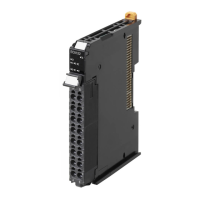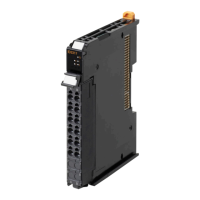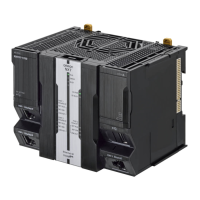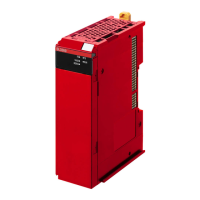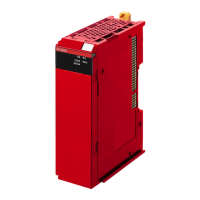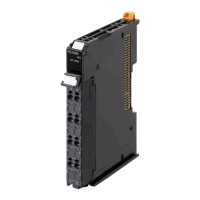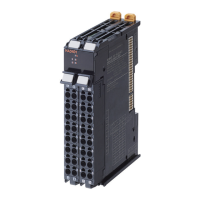10 - 7
10 I/O Refreshing
NX-series EtherCAT Coupler Unit User’s Manual (W519)
10-3 I/O Refreshing for Ether-
CAT Slave Terminals
10
10-3-3 Selecting NX Units
To enable the distributed clock for the EtherCAT Coupler Unit, set the Enable Distributed Clock
slave parameter on the Edit Configuration Dialog Box on the Sysmac Studio. The DC is
enabled by default on the Sysmac Studio. Refer to 9-2-2 Settings as an EtherCAT Slave on
page 9-6 for the setting method.
The I/O refreshing methods that you can use depend on the model of the NX Unit. Select the NX Units
according to the I/O refreshing method to use.
Refer to the manuals for the specific Units for the I/O refreshing methods that are supported by individ-
ual NX Units.
This section describes the operation of Synchronous I/O refreshing and Free-Run refreshing.
The detailed operation of the I/O refreshing methods depends on the NX Units. Refer to the manuals for
the NX Units.
All NX Units that support synchronous I/O refreshing in the EtherCAT Slave Terminal read their inputs
at the same time at a fixed interval based on Sync0.These NX Units also refresh their outputs simulta-
neously but at different intervals from the intervals for the inputs.
If there are multiple Slave Terminals on the same EtherCAT network, all of them operate as described
above. This means that all NX Units that support synchronous I/O refreshing in all Slave Terminals read
inputs at the same time and refresh outputs at the same time.
NX Units #1 to #3 in EtherCAT Slave Terminals #2 and #3 in the figure labeled Example of I/O Refresh-
ing Mode Operation on page 10-5 provide examples of operation with synchronous I/O refreshing.
All NX Units read their inputs at the same time ((A) in the figure).
All NX Units refresh their outputs at the same time ((B) in the figure).
Sync0 and the cyclic timing of reading inputs and updating outputs and the maximum NX bus refresh
cycle of the Slave Terminals are automatically calculated by the Sysmac Studio according to the I/O
refresh cycles of the NX Units in the Slave Terminals and other factors when the Slave Terminals are
configured and set up.
If you use synchronous I/O refreshing, you must set the primary period to a value that is longer than the
NX bus refresh cycle that is automatically calculated by the Sysmac Studio. Refer to Primary Period
Setting for Synchronous I/O Refreshing on page 10-10 for details.
10-3-3 Selecting NX Units
10-3-4 I/O Refreshing Method Operation
Operation of Synchronous I/O Refreshing
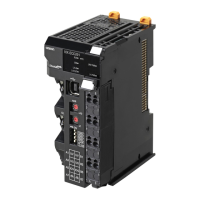
